It looks like you're using an Ad Blocker.
Please white-list or disable AboveTopSecret.com in your ad-blocking tool.
Thank you.
Some features of ATS will be disabled while you continue to use an ad-blocker.
share:
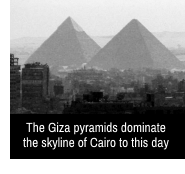 This thread is quite different from my previous ones, it's more "visual" and less
heavy on text. My intention is to showcase Ancient Egyptian architecture in such a way that the "design language" of the ancient builders is more in
focus than in my previous threads. By providing a collection of carefully selected photos (spanning different dynasties), I'm hoping to illustrate
just how unusual the execution of their architecture is and how it sometimes seems to be way ahead of its time. I hope you'll enjoy this photographic
journey and please hang in there until the end where I explain a bit more about why I wanted to make this particular thread. The downsized,
low-resolution previews below are linked to each source image, a click will lead you to the page with the original photo (also see disclaimer about
image use at the end of this post).
This thread is quite different from my previous ones, it's more "visual" and less
heavy on text. My intention is to showcase Ancient Egyptian architecture in such a way that the "design language" of the ancient builders is more in
focus than in my previous threads. By providing a collection of carefully selected photos (spanning different dynasties), I'm hoping to illustrate
just how unusual the execution of their architecture is and how it sometimes seems to be way ahead of its time. I hope you'll enjoy this photographic
journey and please hang in there until the end where I explain a bit more about why I wanted to make this particular thread. The downsized,
low-resolution previews below are linked to each source image, a click will lead you to the page with the original photo (also see disclaimer about
image use at the end of this post). But now it's time to marvel at some truly unusual accomplishments, so here we go...

Pathway leading up to the pyramid at Meidum
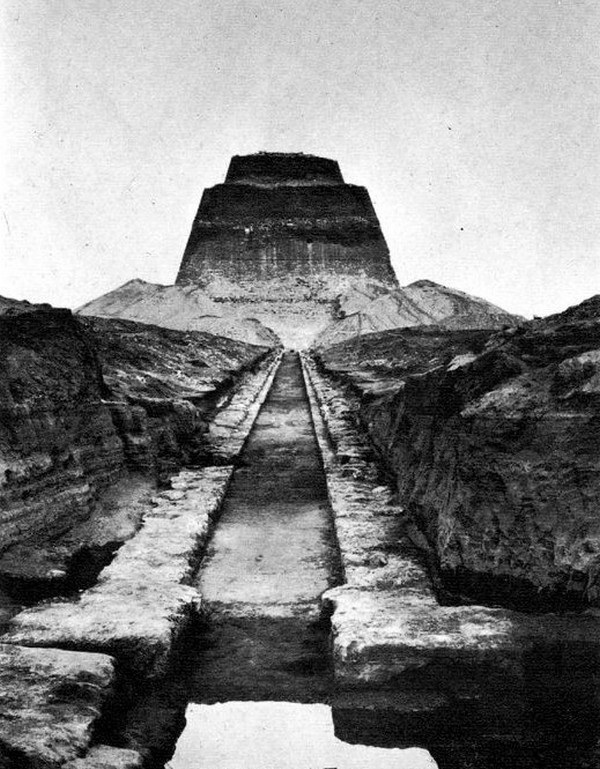
Corbel-vaulted ceiling inside the Red Pyramid
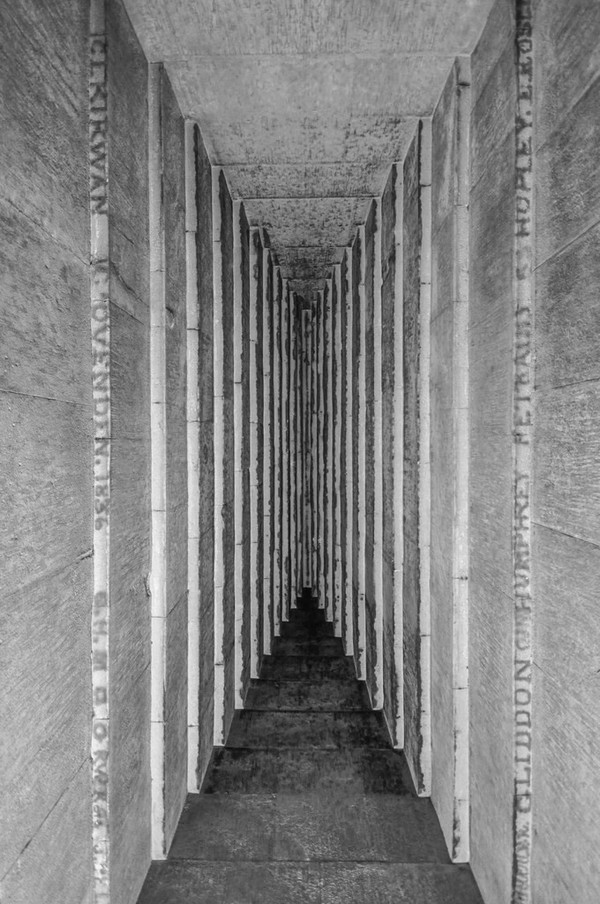
Upper casing stones of the pyramid of Khafre:
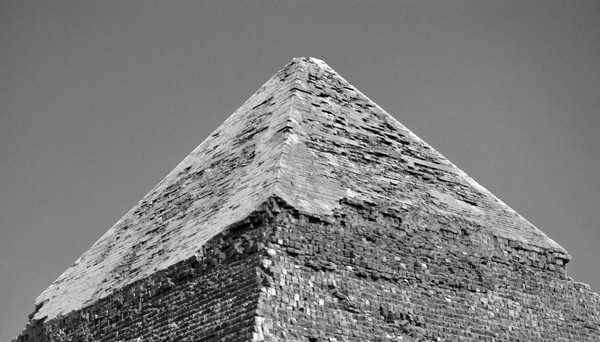
Valley Temple at Giza
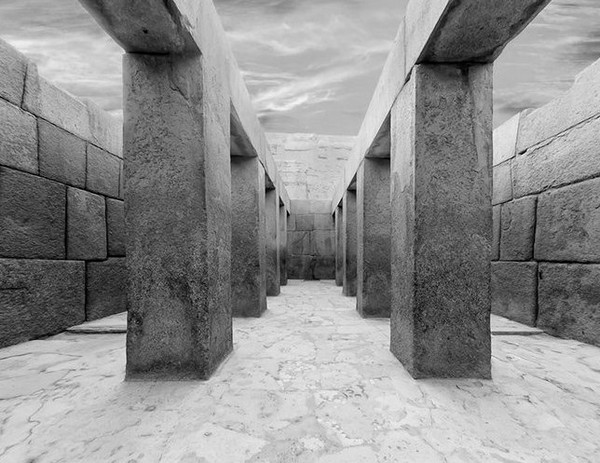
Pyramid at Meidum

Temple of Hatshepsut
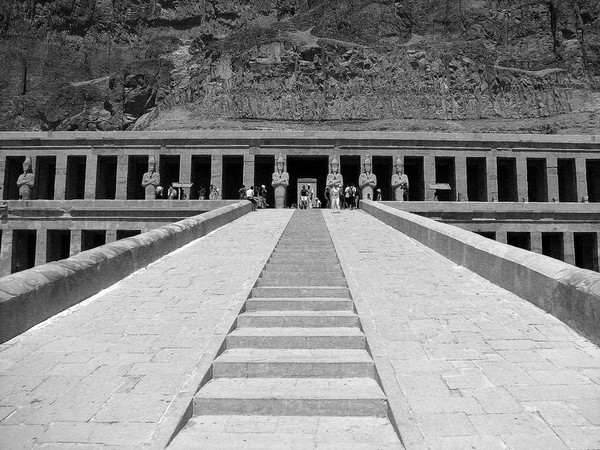
Funerary Complex of Djoser at Saqqara:
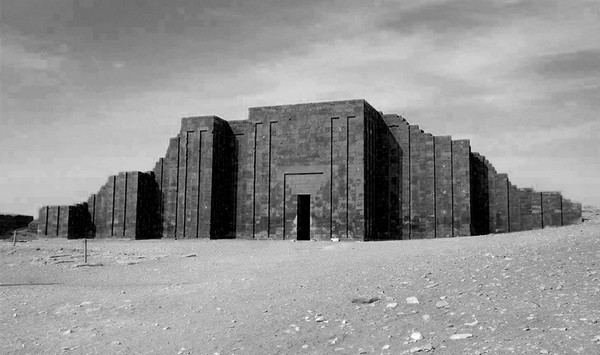
Inside the Funerary Complex of Djoser:
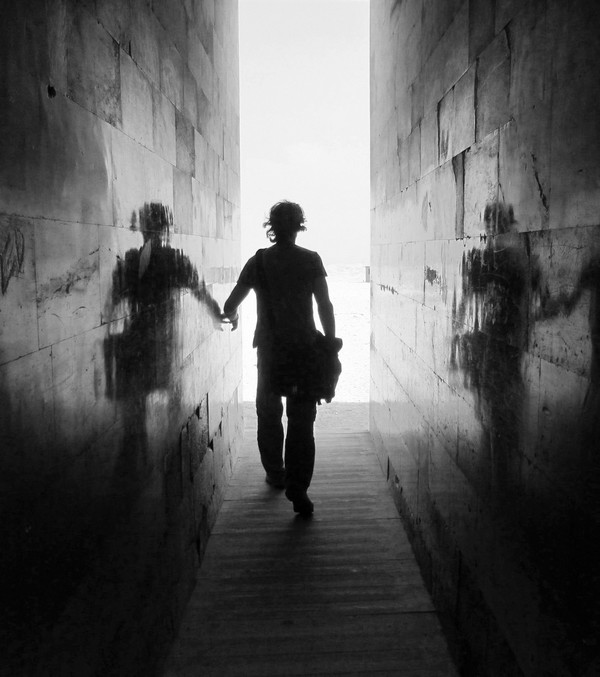
Megalithic Mastaba with slanted Walls:
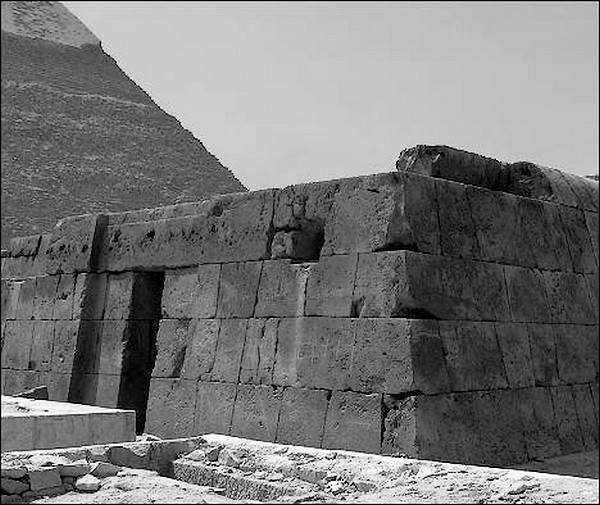
Aerial view of Giza plateau:
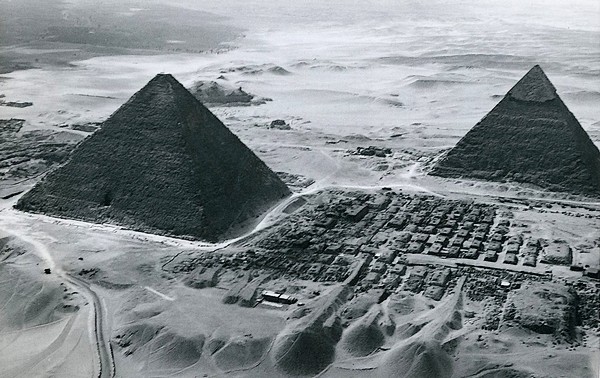
The Khafre Quarry
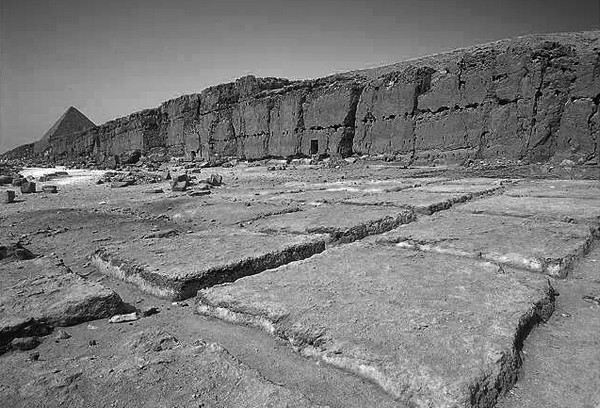
Entrance to Menkaure's Pyramid
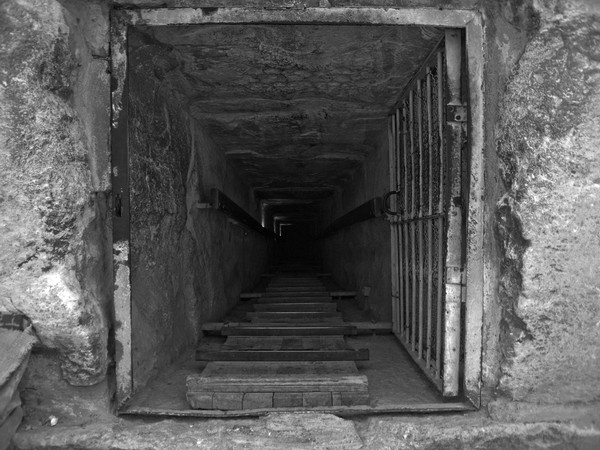
Inside the Red Pyramid:
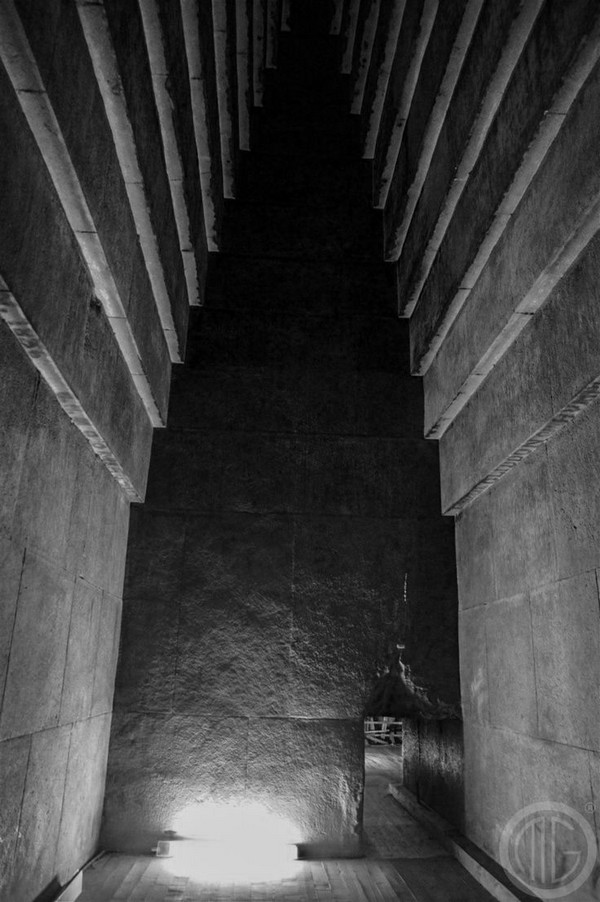
Unfinished Pyramid at Zawyet El Aryan
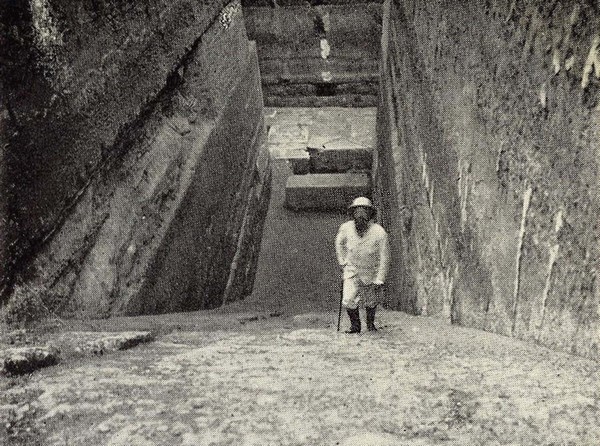
Granite Sarcophagus at the Serapeum/Saqqara:
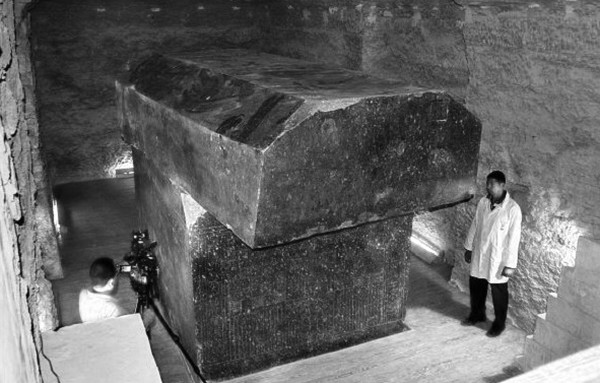
When viewed from above, the great pyramid reveals not 4 but 8 faces
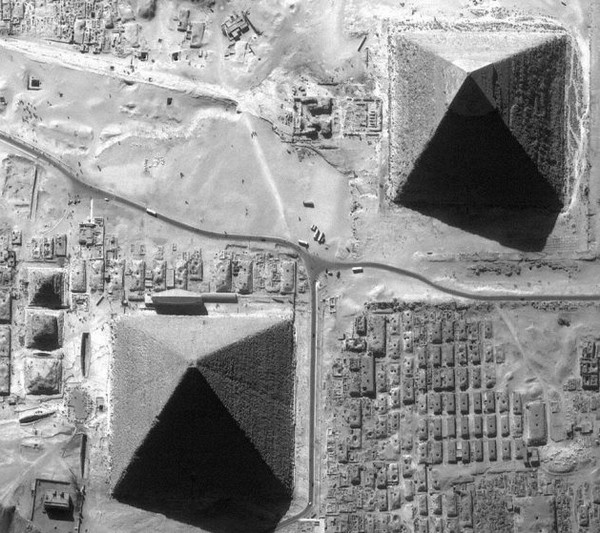
Megalithic block at Elephantine Island:
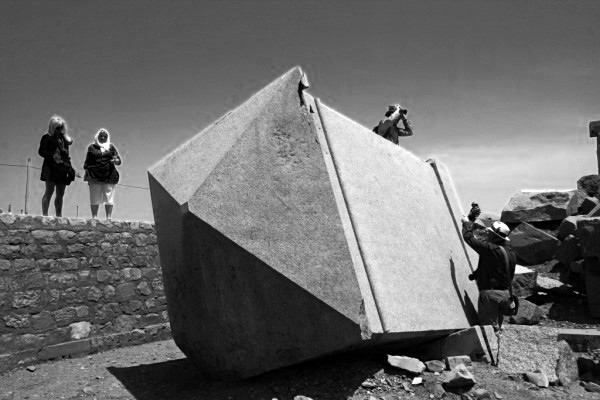
Inside the Great Pyramid: The Grand Gallery
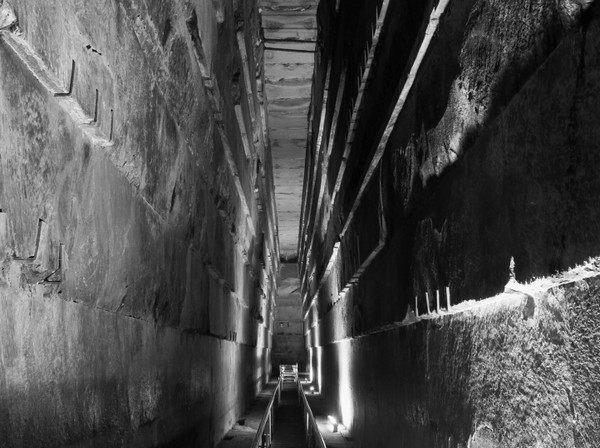
Inside the Great Pyramid: The King's Chamber
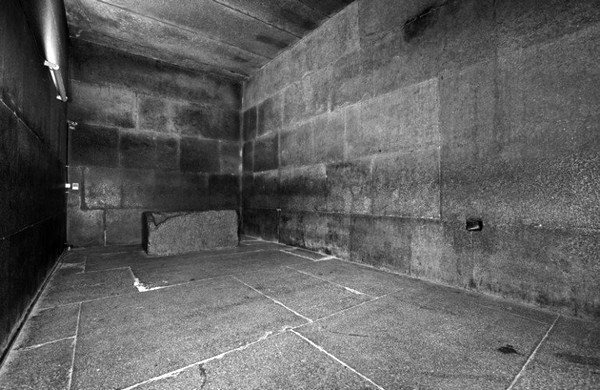
One of the so-called "airshafts" in the King's Chamber
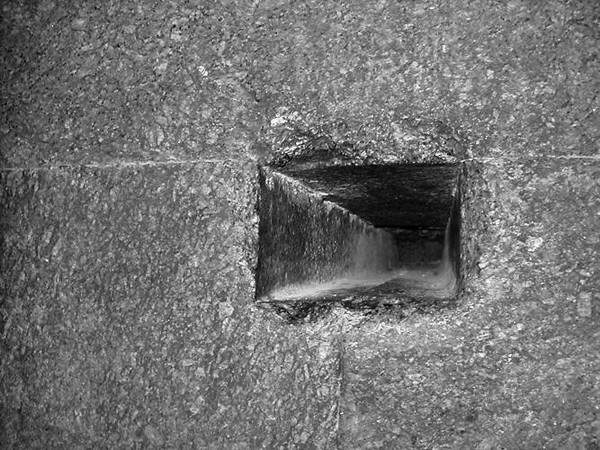
Gantenbrink's Door: View of the end of one of the pyramid's airshafts
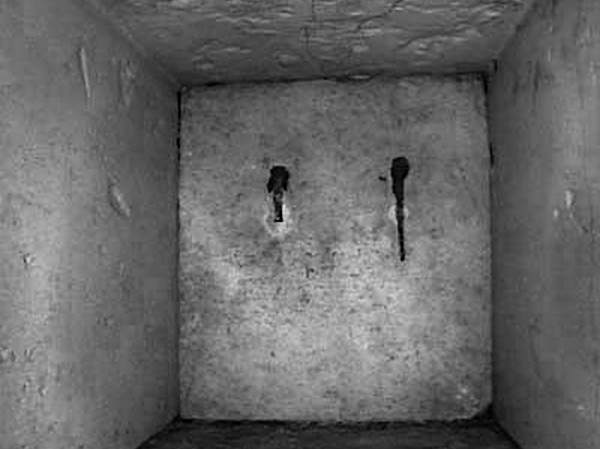
Pyramid Casing Stones

Unfinished Pyramid at Zawyet El Aryan
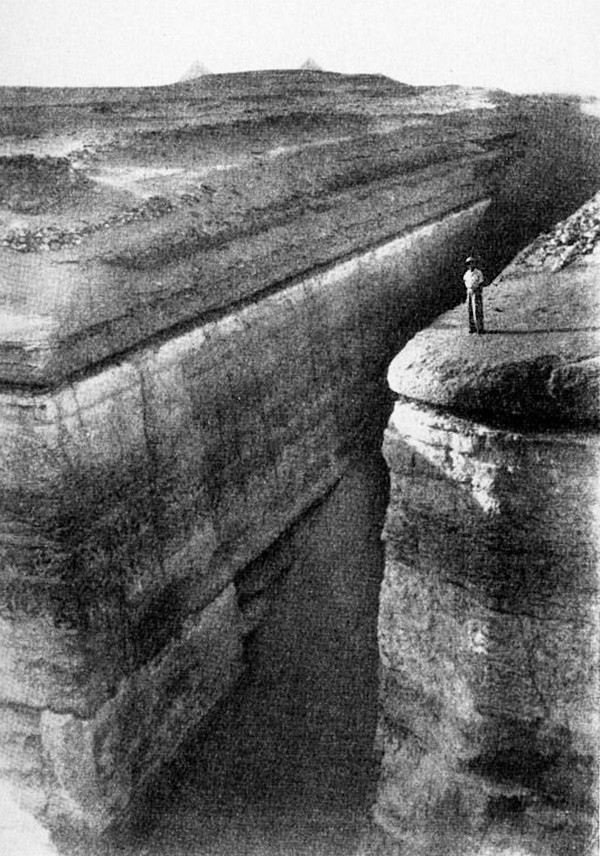

What we see in Egypt today, and especially at the Giza Plateau, is not exactly what visitors in ancient times would have seen. One should keep in mind that the pyramid casing stones at some point in the past gave the pyramids an even more perfect and impressive appearance. It must have been a sight to behold, indeed:
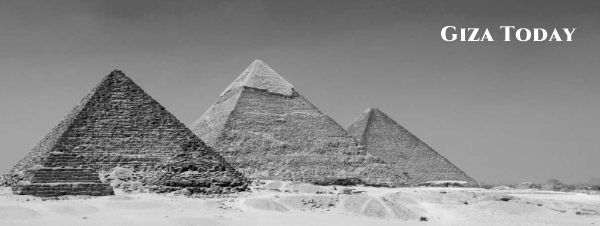
Let's also remember, all of the above was created at a time where the vast majority of people on this planet lived more like this:

To wrap up this thread, I'd like to add my personal view: some of the architecture in ancient Egypt does seem a bit anomalous with all its aesthetic appeal, its general trend towards precision, the sometimes unnecessarily complex design, the choice of materials, the early date of construction, the enormous scale and so on and so forth.
Personally, I think a lot of it looks and feels "industrial", although Egyptologists will always maintain that it's nothing unusual considering the historical context and evolution of the architectural style in pharaonic times. It always amazes me when thinking about the fact that one of the earliest ancient civilizations have built what we would call skyscrapers today, with a height of up to 150 meters. Those who created these structures had a great variety of neat engineering tricks up their sleeve. Tricks that still baffle us up to this day, incredible as it may seem.
I hope you enjoyed this OP and thanks for reading up to here!
DISCLAIMER: The cropped and downsized images used in this post will likely qualify as fair use. Source URL's are linked to the images, clicking on an image takes you directly to the source address on the web. Many images are creative commons or public domain. Moderators are welcome to remove any photos in case their use in the context of this thread is deemed inappropriate.
edit on 6-3-2020 by jeep3r because: formatting
That was a very cool photographic journey. I've always found the architecture and lifestyle of the ancients fascinating, I too have always pictured
what these structures would have looked like back in their days. It must have been a stunning sight.
Thanks for posting, always good to look at pictures from a world long gone.
No wonder aliens would want to study humans... fascinating little derps.
Thanks for posting, always good to look at pictures from a world long gone.
No wonder aliens would want to study humans... fascinating little derps.
A comment on the Meidum pyramid:
The upper parts seem to have collapsed during construction. If so, the rubble could be covering some of the tools and technology used to build the pyramid. An excavation could reveal much, but it is not likely at this time.
The upper parts seem to have collapsed during construction. If so, the rubble could be covering some of the tools and technology used to build the pyramid. An excavation could reveal much, but it is not likely at this time.
I look at the black granite sarcophagus at, Granite Sarcophagus at the Serapeum/Saqqara:
and the immense size of it all and then look at the supposed sarcophagus Inside the Great Pyramid: The King's Chamber and think no. No way is that vessel in the great pyramid a burial sarcophagus.
the first had to have been set into place during construction. Also, no capstone in the great pyramid.
and the immense size of it all and then look at the supposed sarcophagus Inside the Great Pyramid: The King's Chamber and think no. No way is that vessel in the great pyramid a burial sarcophagus.
the first had to have been set into place during construction. Also, no capstone in the great pyramid.
originally posted by: Crosswinds
That was a very cool photographic journey. I've always found the architecture and lifestyle of the ancients fascinating, I too have always pictured what these structures would have looked like back in their days. It must have been a stunning sight.
Thanks for posting, always good to look at pictures from a world long gone.
You're welcome and thanks for taking the time to check it out. Giza plateau, while certainly impressive today, would likely have left visitors rubbing their eyes in disbelief in light of such an accomplishment - some 4500 years ago.
originally posted by: Lazarus Short
A comment on the Meidum pyramid:
The upper parts seem to have collapsed during construction. If so, the rubble could be covering some of the tools and technology used to build the pyramid. An excavation could reveal much, but it is not likely at this time.
Thanks for pointing that out, and I agree that much is left to be discovered beneath the sands of Egypt, besides the many fascinating artifacts we already found, showcased in museums all around the world. Finding tools and other artifacts at Medium and other places would be quite exciting indeed.
I recall that the area of the alleged "Labyrinth of Egypt" is also currently not open for any digs, which is a pity since that's also a potentially interesting site when thinking about underground structures and facilities hinted at in various accounts and literature...
What I try to remember that we tend to see these things as monochrome gray or yellow while at the time they were in use a lot of them were painted
with bright, garish colors or covered with hieroglyphics or even gold.
Sometimes I wonder what an average day of a pyramid worker was like. Wake up in your little mud apartment, maybe walk over to a central area where they would give out food or water for the day. A constant fog of cooking meat and bread. Head over to the work site where your supervisor would have the work goal plan for the day. Meet up with pals, chit-chat with your friends about the weather or members of the opposite sex. Head out onto the plateau with your team and pick up your chisel or rope or whatever tool you were using for your job. Put in some solid hours of work. Break for lunch when a food service cart came by your site. There were always kids running around carrying water for the workers, also people who would swap out tools and rope or whatever would get worn out. Maybe you were a supervisor, getting plans from higher up the bureaucracy, organizing. After 1,000 years and many generations, everybody would pretty much know their jobs. And when the sun started to set you'd slow down and get organized for the next day, the supervisors keeping track of progress and noting any potential problems. Go home, sit around the small fire and get some more roasted meat and bread, maybe a little beer. Play with your kids. Get amorous with your wife. Watch TV for a while, check emails, go to bed. Start it all over the next day.
Not a lot of intellectual stimulation, but also not a lot of stress. Everybody would have their job and just do it. Somewhere the Pharaoh and his entourage were making big decisions and keeping the universe in order. You'd just be a regular working guy, day to day.
Sometimes I wonder what an average day of a pyramid worker was like. Wake up in your little mud apartment, maybe walk over to a central area where they would give out food or water for the day. A constant fog of cooking meat and bread. Head over to the work site where your supervisor would have the work goal plan for the day. Meet up with pals, chit-chat with your friends about the weather or members of the opposite sex. Head out onto the plateau with your team and pick up your chisel or rope or whatever tool you were using for your job. Put in some solid hours of work. Break for lunch when a food service cart came by your site. There were always kids running around carrying water for the workers, also people who would swap out tools and rope or whatever would get worn out. Maybe you were a supervisor, getting plans from higher up the bureaucracy, organizing. After 1,000 years and many generations, everybody would pretty much know their jobs. And when the sun started to set you'd slow down and get organized for the next day, the supervisors keeping track of progress and noting any potential problems. Go home, sit around the small fire and get some more roasted meat and bread, maybe a little beer. Play with your kids. Get amorous with your wife. Watch TV for a while, check emails, go to bed. Start it all over the next day.
Not a lot of intellectual stimulation, but also not a lot of stress. Everybody would have their job and just do it. Somewhere the Pharaoh and his entourage were making big decisions and keeping the universe in order. You'd just be a regular working guy, day to day.
a reply to: jeep3r
That was a nice thread to read..thx. The thing is that in our age of rockets and cellphones there are still people on our planet going out into the wildernis with their bow and arrow to put dinner on their "plate". Therefore I do not find it a riddle how pyramids could be build while many of the other people on the planet lived in huts... Totally possible..
That was a nice thread to read..thx. The thing is that in our age of rockets and cellphones there are still people on our planet going out into the wildernis with their bow and arrow to put dinner on their "plate". Therefore I do not find it a riddle how pyramids could be build while many of the other people on the planet lived in huts... Totally possible..
They sure sure liked to work with rock back in those days, spending a lot of time chiseling on stone. But I suppose they knew their creations would
last for a long time. It was like art for them.
originally posted by: Blue Shift
Break for lunch when a food service cart came by your site.
It could have been a good life, no doubt, including some luxury incentives like the food service cart passing by
On the other hand, pounding and shaping stones all day probably had quite some impact on the worker's health. Not sure if it was really just a matter of manpower, simple tools, time and some divine purpose, but who knows.
originally posted by: CharlesT
I look at the black granite sarcophagus at, Granite Sarcophagus at the Serapeum/Saqqara:
and the immense size of it all and then look at the supposed sarcophagus Inside the Great Pyramid: The King's Chamber and think no. No way is that vessel in the great pyramid a burial sarcophagus.
the first had to have been set into place during construction. Also, no capstone in the great pyramid.
Good point! The sarcophagus in the "King's Chamber" indeed seems to be much less impressive and also a bit undersized in comparison. Maybe the Apis Bulls, which were said to have been in the Sarcophagi at the Serapeum, were of higher importance at the time, however unlikely.
Also, the sarcophagus inside the GP seems strangely misplaced in that large chamber, in terms of it not being aligned centrally along some axis. Not sure if it has been moved by someone in earlier days or whether the position of the sarcophagus plays any role in the first place.
If I recall they have a lot of copper from Michigan and Wisconsin that has been found there. They just don't know who or how..
mynorth.com...
grahamhancock.com...
mynorth.com...
grahamhancock.com...
a reply to: jeep3r
Brilliant post, love the image compilation.
But you know that view of our ancestors is schewed and may be wrong, the majority may have lived in far more advanced conditions than became the popular view of them.
For example there were remains of well planned out houses over 4000 years old found in Norway, if anything the people became more primitive there afterwards and it is even believed these square buildings were raised off the floor and had a second story above them.
The ruin's of Thera were the people lived very modern lives with water and sanitation in there home's, building's that were earthquake resistant and well built.
The revised history of the Celt's that suggests that the more we find about them the more advanced they appear to have been, wood covered road's connecting many of there city's, we know from find's in a bog in ireland that they may even have had a very efficiant way of gathering wheat since there was a mysterious piece of wood that was shaped like a keyhole cut, wheat stalk's would be gathered into the part of the hole - like an A with the hole at the top of it and then the heads of the wheat would be bundled together into the hole, this also indicates that the Wheelbarrow concept may be much older known in Europe than has previously been accepted since traditional views are that the Chinese had the idea first but this one piece of wood may suggest a cart of wheel barrow like object would be pushed through the feild of wheat and the teeth of the A's would gather the wheat into the Keyhole O's and strip them into the cart as it was pushed leaving only the stubble to be cleared or grazed away afterwards - or gathered for thatching.
O OO
A AA
Also there are bone fragment's that suggest very long ago cave men were rather more intelligent and complex in there atrological view of the sky than was believed.
Also remember much that our ancestors built with was washed away and rotted away, even in Egypt only fragment's of there many ages of civilization remain with great mud brick temple's, palaces, fortress and city's having long ago washed away into nothing leaving only crop mark's and buried remains to suggest those places even existed, in wetter clime's wood was favoured and it is indeed an excellent insulator in winter but it too rot's away, we still use wood today, even modern brick's are really just mud brick's that we have learned to fire.
I do definitely believe though that this has all been before, oh maybe not identical, maybe not filling our environment with plastic's but society's, cultures and civilizations that we know nothing about have risen and fallen more often and over a longer period of time than modern expert's like to admit, perhaps some of them have even rivalled or surpassed us before there fall.
I wonder was that pyramid unfinished or was it demolished, robbed out by later egyptian's - perhaps it was closer to a settlement and Giza was simply spared because of the egyptian superstition's or the site was too far from those that would have quarried it, later when the Arab's invaded egypt they stripped the casing stone's from the Giza pyramid's and used them to build mosques and palaces though as many have suggested is it possible that the outer courses were actually later additons - restoration's anyway and the site may indeed be far older than is accepted despite the aging of that piece of wood found down one of those shaft's?.
The truth is we may all have theory's, the experts probably do know a lot more than most of us but they have arrived at there own conclusions and were no more present at those places in the past than we were, so while perhaps based on less evidence just perhap's some alternative theory's of the past are right.
The ossyrion of which you have included an images is also enigmatic, like the giza pyramid's it has no inscriptions and could be far older, also it was buried, then there was one of those temples not sure which but someone did a piece on it on ATS a while back - was it you sorry if it was I lost the link, but that piece showed stone temple a floor in a well known ruin at the base of one of the column's, the huge stone slab was broken and below it in the sand underlying the flag could clearly be seen the top of another Column decorated in a similar style to the top of the column over it, those column's were something like 40 feet tall so does that mean an entire other temple below the floor of a later temple built over it? perhaps there is far more below the ground in Egypt.
Brilliant post, love the image compilation.
But you know that view of our ancestors is schewed and may be wrong, the majority may have lived in far more advanced conditions than became the popular view of them.
For example there were remains of well planned out houses over 4000 years old found in Norway, if anything the people became more primitive there afterwards and it is even believed these square buildings were raised off the floor and had a second story above them.
The ruin's of Thera were the people lived very modern lives with water and sanitation in there home's, building's that were earthquake resistant and well built.
The revised history of the Celt's that suggests that the more we find about them the more advanced they appear to have been, wood covered road's connecting many of there city's, we know from find's in a bog in ireland that they may even have had a very efficiant way of gathering wheat since there was a mysterious piece of wood that was shaped like a keyhole cut, wheat stalk's would be gathered into the part of the hole - like an A with the hole at the top of it and then the heads of the wheat would be bundled together into the hole, this also indicates that the Wheelbarrow concept may be much older known in Europe than has previously been accepted since traditional views are that the Chinese had the idea first but this one piece of wood may suggest a cart of wheel barrow like object would be pushed through the feild of wheat and the teeth of the A's would gather the wheat into the Keyhole O's and strip them into the cart as it was pushed leaving only the stubble to be cleared or grazed away afterwards - or gathered for thatching.
O OO
A AA
Also there are bone fragment's that suggest very long ago cave men were rather more intelligent and complex in there atrological view of the sky than was believed.
Also remember much that our ancestors built with was washed away and rotted away, even in Egypt only fragment's of there many ages of civilization remain with great mud brick temple's, palaces, fortress and city's having long ago washed away into nothing leaving only crop mark's and buried remains to suggest those places even existed, in wetter clime's wood was favoured and it is indeed an excellent insulator in winter but it too rot's away, we still use wood today, even modern brick's are really just mud brick's that we have learned to fire.
I do definitely believe though that this has all been before, oh maybe not identical, maybe not filling our environment with plastic's but society's, cultures and civilizations that we know nothing about have risen and fallen more often and over a longer period of time than modern expert's like to admit, perhaps some of them have even rivalled or surpassed us before there fall.
I wonder was that pyramid unfinished or was it demolished, robbed out by later egyptian's - perhaps it was closer to a settlement and Giza was simply spared because of the egyptian superstition's or the site was too far from those that would have quarried it, later when the Arab's invaded egypt they stripped the casing stone's from the Giza pyramid's and used them to build mosques and palaces though as many have suggested is it possible that the outer courses were actually later additons - restoration's anyway and the site may indeed be far older than is accepted despite the aging of that piece of wood found down one of those shaft's?.
The truth is we may all have theory's, the experts probably do know a lot more than most of us but they have arrived at there own conclusions and were no more present at those places in the past than we were, so while perhaps based on less evidence just perhap's some alternative theory's of the past are right.
The ossyrion of which you have included an images is also enigmatic, like the giza pyramid's it has no inscriptions and could be far older, also it was buried, then there was one of those temples not sure which but someone did a piece on it on ATS a while back - was it you sorry if it was I lost the link, but that piece showed stone temple a floor in a well known ruin at the base of one of the column's, the huge stone slab was broken and below it in the sand underlying the flag could clearly be seen the top of another Column decorated in a similar style to the top of the column over it, those column's were something like 40 feet tall so does that mean an entire other temple below the floor of a later temple built over it? perhaps there is far more below the ground in Egypt.
edit on 6-3-2020 by LABTECH767 because: (no reason given)
originally posted by: CharlesT
I look at the black granite sarcophagus at, Granite Sarcophagus at the Serapeum/Saqqara:
and the immense size of it all and then look at the supposed sarcophagus Inside the Great Pyramid: The King's Chamber and think no. No way is that vessel in the great pyramid a burial sarcophagus.
the first had to have been set into place during construction. Also, no capstone in the great pyramid.
It will be interesting to see if any of the unopened sarcophagi, if they ever do, contain the remains of any bulls. Or is the whole concept just a load of bull?
a reply to: jeep3r
Excellent work.
I would have loved to have lived when Saqqara was up, running and in its prime. There, the Giza Plateau, Malta, Peru...
At Saqqara, what fascinates me isn't it's appearance but its over all function. Which seems to have dealt with sound and vibration, possible in some yet unknown way "frequency. We may never know.
Excellent work.
I would have loved to have lived when Saqqara was up, running and in its prime. There, the Giza Plateau, Malta, Peru...
At Saqqara, what fascinates me isn't it's appearance but its over all function. Which seems to have dealt with sound and vibration, possible in some yet unknown way "frequency. We may never know.
originally posted by: jeep3r
originally posted by: Crosswinds
That was a very cool photographic journey. I've always found the architecture and lifestyle of the ancients fascinating, I too have always pictured what these structures would have looked like back in their days. It must have been a stunning sight.
Thanks for posting, always good to look at pictures from a world long gone.
You're welcome and thanks for taking the time to check it out. Giza plateau, while certainly impressive today, would likely have left visitors rubbing their eyes in disbelief in light of such an accomplishment - some 4500 years ago.
Probably damn near rub their eyeballs til just sockets remained then some 11000 years back ?
originally posted by: LABTECH767
a reply to: jeep3r
The truth is we may all have theory's, the experts probably do know a lot more than most of us but they have arrived at there own conclusions and were no more present at those places in the past than we were, so while perhaps based on less evidence just perhap's some alternative theory's of the past are right.
I can only subscribe to the above and I'll stick to my opinion that the last chapter regarding some ancient civilizations has yet to be written. Also, thanks for your posts which are always so elaborate and passionate, adding lots of additional info to my threads.
originally posted by: SLAYER69
a reply to: jeep3r
Excellent work. I would have loved to have lived when Saqqara was up, running and in its prime. There, the Giza Plateau, Malta, Peru...
At Saqqara, what fascinates me isn't it's appearance but its over all function. Which seems to have dealt with sound and vibration, possible in some yet unknown way "frequency. We may never know.
Thanks a lot, Slayer. Sounds like we can expect a new thread about Saqqara and its original purpose soon.
Maybe someone will come up with a working model with sonic properties that makes sense in terms of how the architecture was laid out and how materials were used in that context.
new topics
-
Outgoing Lame Duck BIDEN Officials and Democrats Voice Their Regrets.
2024 Elections: 2 hours ago -
Reflections of Elections past
US Political Madness: 4 hours ago -
President Carter has passed
Mainstream News: 6 hours ago -
Get Reday - Here comes the Bird Flu Pandemic - Millions are Notified
Diseases and Pandemics: 7 hours ago -
2 Guys die hunting Bigfoot
Cryptozoology: 7 hours ago -
Joe Rogan and The Black Keys Diorama
General Entertainment: 9 hours ago
top topics
-
Get Reday - Here comes the Bird Flu Pandemic - Millions are Notified
Diseases and Pandemics: 7 hours ago, 16 flags -
President Carter has passed
Mainstream News: 6 hours ago, 15 flags -
2 Guys die hunting Bigfoot
Cryptozoology: 7 hours ago, 6 flags -
Reflections of Elections past
US Political Madness: 4 hours ago, 5 flags -
Outgoing Lame Duck BIDEN Officials and Democrats Voice Their Regrets.
2024 Elections: 2 hours ago, 4 flags -
Joe Rogan and The Black Keys Diorama
General Entertainment: 9 hours ago, 3 flags
active topics
-
Get Reday - Here comes the Bird Flu Pandemic - Millions are Notified
Diseases and Pandemics • 19 • : DontTreadOnMe -
-@TH3WH17ERABB17- -Q- ---TIME TO SHOW THE WORLD--- -Part- --44--
Dissecting Disinformation • 3846 • : 777Vader -
Why Such An Uproar Over Non-US Citizens With H1-B Work Visas.
Social Issues and Civil Unrest • 79 • : cherokeetroy -
President Carter has passed
Mainstream News • 11 • : Lumenari -
Outgoing Lame Duck BIDEN Officials and Democrats Voice Their Regrets.
2024 Elections • 3 • : SteamyAmerican -
This is why ALL illegals who live in the US must go
Social Issues and Civil Unrest • 35 • : charlyv -
2 Guys die hunting Bigfoot
Cryptozoology • 15 • : Lumenari -
Danish Prime Minister said to keep 3 days worth of canned goods on hand
World War Three • 16 • : Irishhaf -
New UK Petition - Close the borders! Suspend ALL immigration for 5 years!
Regional Politics • 9 • : Astrocometus -
Reflections of Elections past
US Political Madness • 2 • : charlest2
